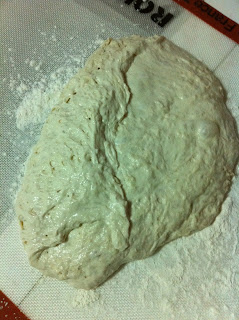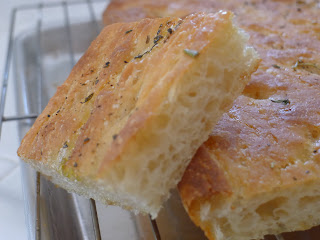I haven't been baking for quite some time due to my crazy work schedule (hint, since I moved out of the big company and into startup world) and the disaster I had with my
last attempt to bake
Chad's bread. However, Ken's new book (well, new for me but this book has been out for some time) inspires me to bake again and I want to share the results. Also I'm hoping I can someday walk Ken's journey (he was at some point in his life in my shoes but he decided to leave his stable job to pursue something he loves).
I'm particularly interested in his levain bread, in other words, his bread recipes that calls for the use of wild yeast. But wait, I no longer have my starter, so I had to spend 15 days to create the starter again. The second time is much easier as now I think I know what I'm doing :) BTW, my starter is actually Chad's recipe though and not Ken's. Ken's starter uses a lot of flour so for home baker you will waste a lot of flour everyday. I found Chad's starter works just fine.
I also bought the
6 qt and 12 qt container just like what Ken suggests in his book as well as the banneton (from
Amazon) for proofing the dough.
I chose to go with his Pain De Campagne recipe (Country Bread) because to be honest I'm afraid to bake with pure levain due to my last disaster. I'm very curious to know if this is as good as Chad's recipe. However, I have to say I really like the guided schedule Ken put in his book though as you don't waste the whole day baking bread. In short, you mix and shape the dough starting the afternoon of the day before (after 3pm), and bake the next morning. Most of the time the dough stays in the refrigerator. I love it!!! Also I bought a
wood board for kneading and used that instead of
Roulpat. I found that I'm able to shape the dough much better due to some friction that the wood is able to create vs none from the silicone. My next one to try Chad's recipe again but with some adjustment from things I learn from Ken's book.
The result is yet another amazing bread that you just can't get with just using commercial yeast (sorry Jim Lahey, I still like your bread). It's the levain that makes the bread taste so complex. This is the second time I bake this bread. First time I baked this bread, I brought it to work and was told by some folks that these are some of the most amazing bread they ever had. Man, that feels good and inspires me to do it again. So, if you are in bread baking like me, check it out. I also want to mention I made some adjustment to Ken's recipe to do bench rest before shaping the final dough as it creates more tension and the dough holds itself much better.
Here are some photos of the Pain De Campagne that just came out of my oven this morning. Nom Nom nom :) We just finished half of the loaf.
 |
| Much improved oven spring with the bench rest |
 |
| The two sisters - both are beautiful |
 |
| Nice crumb structure with nice aroma that you only get with using levain |






































